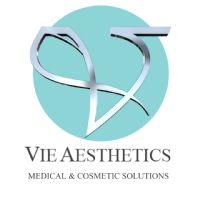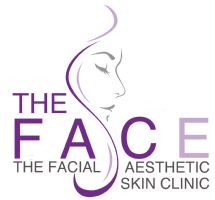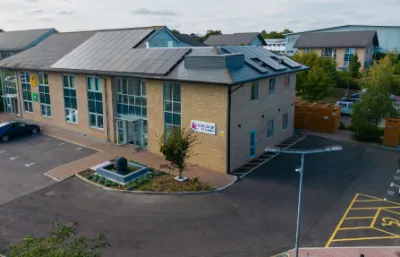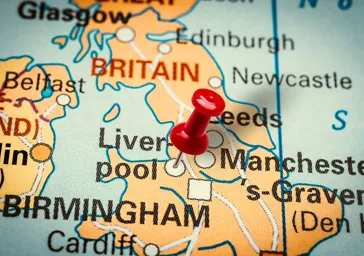Find A Verified Clinic
Trusted PRP Experts, Local to You
Easily connect with qualified, verified professionals for safe, reliable treatment.


Vie Aesthetics
78 London Hill Road, Rayleigh, SS67HP
~5.1 miles away
Vie Aesthetics Accreditations:

The Facial Aesthetic Skin Clinic
15 Radford Way, Billericay, CM12 0AA
~13.5 miles away
The Facial Aesthetic Skin Clinic Accreditations:

Skin Sense GP Clinic
Skin Sense,, 27 Springfield Lyons Approach, Chelmsford, CM2 5LB
~16.6 miles away
Skin Sense GP Clinic Accreditations:
Explore Clinics Near You on the Map
See exactly where verified PRP clinics are located across Southend-on-Sea.
Zoom in, pan around, and click any marker to view each clinic’s profile, read reviews, and check their credentials before you book.

Your PRP Questions
Real Questions from Real People, Answered
Straightforward answers to the questions people like you are asking right now about PRP.

Cost of PRP treatment for hair?
Please give the cost and how many sessions needed to prevent complete hair loss and new hair
Hair loss.
Dear reader My name is Mo I'm interested to have prp treatment in your clinic and I have some questions How many ml of prp i will get injured ? Did you analyse prp There any other services after the treatment is done Thank you
To view all the PRP questions, please click here.
Or click here to ask your own question.
PRP Quick FAQs
Clear, concise answers to common queries
A simple, no-fluff roundup of frequent PRP questions to help you get the facts fast.

Can PRP be used preventatively, before visible signs of ageing or hair loss?
Yes. Many people use PRP proactively in their late 20s or 30s to slow collagen loss and keep hair follicles active. Early intervention often leads to better, longer-lasting results.
How does PRP differ from stem cell therapy?
PRP uses your platelets to release growth factors that stimulate repair. Stem cell therapy involves harvesting and reintroducing stem cells, which is more complex, costly, and not widely available in aesthetic clinics.
Is PRP suitable for darker skin tones?
Yes. PRP is safe across all Fitzpatrick skin types because it doesn’t rely on heat or light energy, which can trigger hyperpigmentation. It’s often chosen as a safer alternative to lasers for darker skin.
Can PRP help after pregnancy?
Postpartum hair shedding and changes in skin texture are common. PRP can safely support scalp recovery and skin rejuvenation once you’re no longer breastfeeding, as most practitioners avoid treatment during that period.
What’s the difference between single-spin and double-spin PRP?
Single-spin centrifugation produces a moderate concentration of platelets. Double-spin methods refine this further, often leading to higher platelet counts. The technique used can influence results, so it’s worth asking your practitioner.
Does hydration really affect PRP results?
Yes. Being well-hydrated improves the quality of your blood sample, which can increase platelet concentration. Practitioners often recommend drinking 1.5–2 litres of water in the days before treatment.
Can PRP be combined with Botox or fillers?
Yes. Many people combine PRP with Botox for movement lines or fillers for lost volume. PRP improves skin quality, while injectables address shape and wrinkles, creating a more complete result.
How soon can I exercise after PRP?
It’s best to avoid strenuous exercise, saunas, and hot yoga for 24–48 hours after treatment. Heat and sweat can increase swelling and irritation at the injection sites.
Does PRP work for under-eye dark circles?
Yes, in some cases. By stimulating collagen and improving blood flow, PRP can reduce hollowness and pigmentation under the eyes. Results vary depending on whether circles are caused by skin thinning, vessels, or pigmentation.
Is there a “best age” to start PRP?
There’s no strict age, but most people start in their 30s or 40s, when early ageing or mild hair thinning appears. Younger patients may use it preventatively, while older patients often combine PRP with other treatments.
Can PRP be done if I’ve had filler or laser recently?
Yes, but timing matters. PRP is often used after laser or microneedling to speed healing. If you’ve had fillers, most practitioners recommend spacing treatments at least 2–4 weeks apart.
Is PRP available on the NHS?
In rare cases, yes—mainly for joint conditions or wound healing. It isn’t offered for cosmetic concerns like hair loss or skin rejuvenation, which remain private treatmen
How long do PRP appointments usually take?
A typical session lasts 45–90 minutes, including consultation, blood draw, and preparation. The injection portion is relatively quick, usually 15–30 minutes.
What lifestyle habits affect PRP results most?
Smoking, heavy alcohol use, poor sleep, and a nutrient-poor diet can all reduce PRP’s effectiveness. A healthy lifestyle supports platelet function and helps maintain results longer.
Does PRP hair treatment hurt?
PRP involves multiple small injections into the scalp, which can cause mild discomfort. Clinics often apply numbing cream or use cooling techniques to minimise pain during the session.
How many PRP treatments will I need?
Most patients start with three to four initial treatments, about four to six weeks apart. Maintenance sessions are usually recommended every six to twelve months, depending on your response and goals.
When will I start to see results of PRP?
Many patients begin to notice a reduction in shedding within the first month. Visible hair thickness and density improvements typically appear between three and six months post-treatment.
Stay Informed with the Latest Aesthetic News & Offers
Join our free newsletter to receive updates on the latest treatments, safety guidance, and exclusive clinic offers near you.
No spam, just expert insights and trusted advice from the UK’s leading aesthetics directory.

